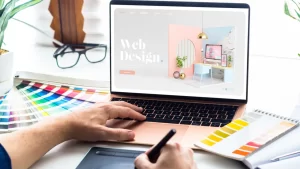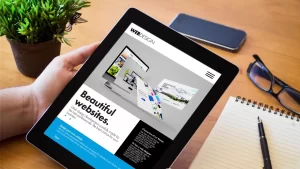Website design has a direct and profound impact on user experience (UX), influencing how visitors interact with a website, how easily they navigate it, and how satisfied they are with the overall experience.
A well-designed website improves usability, engagement, and conversion rates, while poor design can frustrate users and lead to high bounce rates.
Ways Website Design Affects User Experience
1. Navigation and Ease of Use
Intuitive navigation is essential for a positive user experience.
A website with a clear and simple navigation structure allows users to find the information they need quickly and efficiently.
When users can’t easily navigate a site, they are more likely to leave and not return.
Good navigation includes:
- Clear menu options that are easy to locate and understand.
- Logical page hierarchy and organization.
- Internal linking that guides users to relevant content.
2. Mobile Responsiveness
With a significant amount of web traffic coming from mobile devices, a responsive website is crucial for a seamless user experience.
Mobile-friendly design ensures that a website adapts to different screen sizes and devices, providing consistent functionality and aesthetics.
A responsive website prevents issues like distorted images, unreadable text, and difficult navigation on mobile devices.
3. Page Load Speed
Fast load times are critical to a good user experience. Users expect web pages to load within a few seconds, and if a site is slow, they may abandon it entirely.
Optimizing the design by compressing images, minimizing code, and using caching can significantly improve page speed and user satisfaction.
4. Visual Appeal and First Impressions
The visual design of a website creates the first impression for visitors.
Clean, professional design elements, such as a cohesive color scheme, readable typography, and well-organized layouts, make the website more attractive and trustworthy.
Poor visual design can lead to a negative first impression, making users more likely to leave the site.
5. Content Readability and Structure
How content is presented affects how easily users can read and understand it. Websites that use:
- Headings, subheadings, and bullet points to break up content
- Legible fonts and proper line spacing
- Contrast between text and background for better readability
These design elements ensure that users can quickly scan and digest the information on the page, improving their overall experience.
6. User-Centered Design
A user-centered approach focuses on the needs of the user rather than the business. This involves:
- Understanding user behavior and designing features that align with their expectations.
- Clear call-to-action (CTA) buttons that guide users toward desired actions (e.g., signing up for a newsletter or making a purchase).
When the user is the priority, the design tends to be more intuitive, resulting in higher satisfaction and engagement.
7. Accessibility
Accessible web design ensures that the website can be used by people with disabilities, providing a better overall experience for all users.
Features like alt text for images, keyboard-friendly navigation, and adjustable font sizes make the site usable by a wider audience.
8. Interaction and Feedback
Interactive elements, such as hover effects, clickable buttons, and form submissions, provide users with feedback that confirms their actions.
For example, when a button changes color or provides a loading indicator after being clicked, users know that the site is responsive and functioning properly.
9. Trust and Credibility
A professionally designed website can establish trust with users. Clean layouts, easy-to-find contact information, and clear calls to action signal to users that the site is reliable and secure. Websites that look outdated, cluttered, or unprofessional can erode trust, making users hesitant to engage.
10. Emotional Connection
Good design can evoke an emotional response from users.
A visually appealing website that aligns with the brand’s values and message can create a positive connection with visitors, encouraging them to explore more of the site and engage with the content.
Conclusion
Website design is a critical factor in shaping user experience (UX).
From ease of navigation and mobile responsiveness to visual appeal and load speed, every design element affects how users interact with and perceive a website.
By prioritizing user-centered design principles, businesses can create websites that offer a positive, engaging, and seamless experience for their visitors.

















